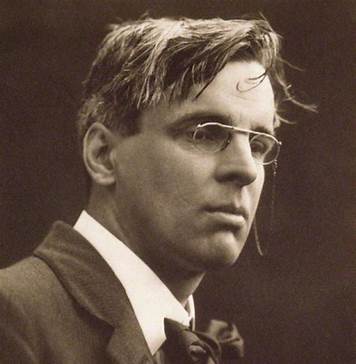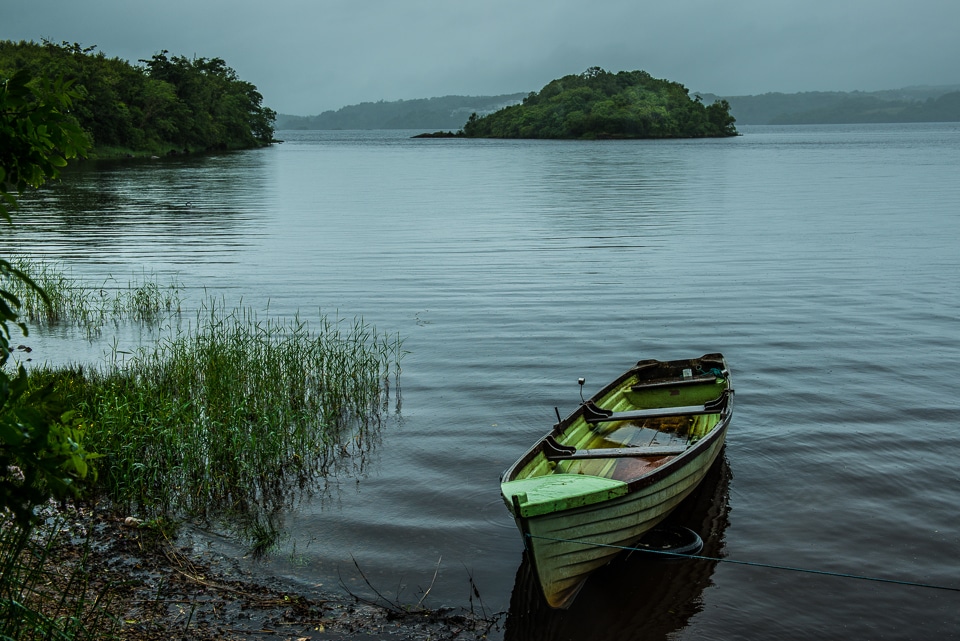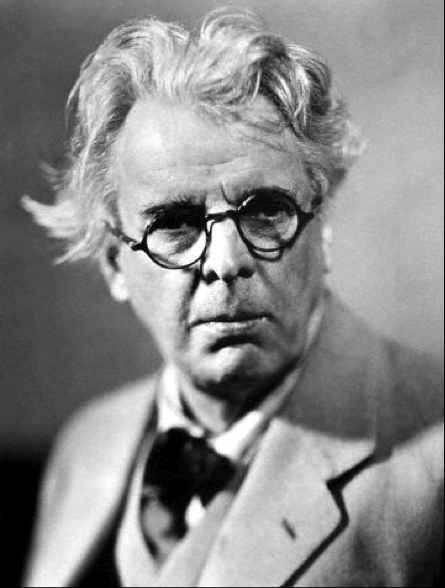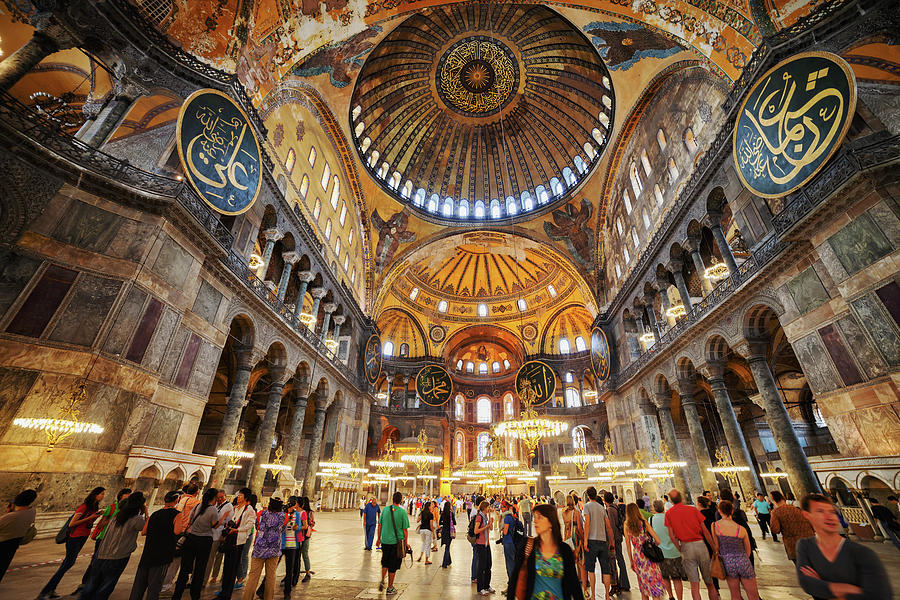From Innisfree to Byzantine: Nature and Culture in W. B. Yeats’ Critique of Civilisation
Can a poet be described as both conservative and revolutionary at the same time? The Irish poet, William Butler Yeats, seems to fit the bill. On the one hand, his poems can be filled with the fervour of political protest; but there is also the inherent “conservative” outlook that cannot be denied. Especially in early decades of the twentieth century, while other poets embraced the innovations of modernism, Yeats’ poems maintained their traditional verse forms and rhyme schemes. The strict, traditional poetic forms coupled with classical and mythological themes and motifs create an orientation that seems to favour the past, repudiate the present and dismiss the future.
It would be overly simplistic, however, to label Yeats’ poems conservative, backward looking and lacking in emotional force. Rather, traditional forms and contents are used to mount critiques – impassioned yet within the constraints of aesthetic measures – of the precarity and decay of human civilisations, foremostly the one he was living in. It is not an idealised past per se these poems seek, but rather the ideal of spiritual transcendence and timelessness, as two of his poems, “The Lake Isle of Innisfree” and “Sailing to Byzantium” illustrate. “Innisfree” was dated to 1890, when Yeats was still a young man in his late twenties; whereas “Byzantine” was written in 1927, when the poet was in his sixties. There are alterations in sentiments from the beginning of his career to a mature old age, but both poems show a contrast of nature and culture, one way or another, as critique of human civilisations.

Innisfree
“The Lake Isle of Innisfree” depicts an imaginary journey, a deep desire to flee from modern urban civilisation and to pursue a spiritual living in harmony with nature. This is achieved through both formal features and rich imagery. The poem has three stanzas of four lines each, using an abab cdcd efef rhyme-scheme. In each stanza there are firstly three lines that are roughly hexametric, in which consonance, assonance, and especially alliteration abound to create a dream-like tranquillity.
I will arise and go now, and go to Innisfree,
And a small cabin build there, of clay and wattles made;
Nine bean-rows will I have there, a hive for the honey-bee,
And live alone in the bee-loud glade.And I shall have some peace there, for peace comes dropping slow,
Dropping from the veils of the morning to where the cricket sings;
There midnight’s all a glimmer, and noon a purple glow,
And evening full of the linnet’s wings.I will arise and go now, for always night and day
(lines 1-12)
I hear lake water lapping with low sounds by the shore;
While I stand on the roadway, or on the pavements grey,
I hear it in the deep heart’s core.
The phrases “cabin … of clay and wattles made” (2), “live alone in the bee-loud glade” (4), “glimmer … glow” (7), and especially the almost onomatopoeic “lake water lapping with low sounds by the shore”(10), create a profound sense of tranquility, but the lulling regularity is broken by a shorter, pentametric last line, which begins with two gentle iambic feet, but finishes with a cluster of three strong beats. The last line of the third quatrain and of the whole poem,
I x hear / it x in / the x deep / heart’s / core /,
presents a rhythm that resembles heart beats: da DA da DA da DA DA DA. Both the shortened length and the last triple stress imitating the accelerating heart beat create a profound sense of yearning felt in the heart, conveyed here through a perfect union of the sound and the sense of the words (“deep heart’s core”). In sum, the poetic style and conventions are used to achieve an aesthetic quality and emotional effect.
But aesthetics and emotions are not the only purposes; instead, the expression of longing for natural simplicity speaks against the industrialised civilisation of the late 19th century England. Nature here represents the spiritual calling of the poet as he rejects the soulless urban culture represented metonymically by “the roadway” and “the pavements grey” (12). The poet imagines dwelling in a hut built with mud and twigs (2), among nine bean-rows and a honey-bee hive (3). The natural surroundings at various times of day are also described, not in a chronological procession, but rather in a montage of images, replete with mingling sounds, colours and movements: bees buzzing (4), crickets chirping (6), songbirds singing and flapping wings (8), and light glistening in purple hue (7). The descent of peace is described in a metaphor of the slow movement of dew drops from the mystic “veils of the morning” (6). Then in the second last line, the sharp discordant contrast is drawn between the natural beauty and plenitude just described and the gloominess and barrenness of the reality of modern city (11).

The contrast is not simply an expression of the poet’s denunciation of England and urban culture and his admiration for Ireland and rural culture; rather, the journey to the Lake Isle of Innisfree symbolises a spiritual pilgrimage to the transcendent. The quasi-religious fervour is especially felt with intertextuality taken into consideration. The opening line, “I will arise and go now,” which is then repeated in the first line of the third stanza, creates a connection with the biblical parable of the prodigal son (Luke 15:15), and the arising and going to Innisfree thus becomes a repentance, a turning of the back to the materialistic world and a return to one’s original calling. In addition, Yeats’ “honey-bee” (3) and “bee-loud glade” would recall the fact that honey is the signature food for John the Baptist, the prototype of Christian monastics, who lived in the wilderness and preached repentance in preparation for the coming of God.
In “Innisfree” Yeats also demonstrated great kinship with the tradition of Ireland’s poems of hermits, the so-called “green martyrs”. The images and themes of “Innisfree” bring to mind many similarities with medieval Irish poems, such as “The Hermitage” attributed to St. Manchan of Offaly, and “The Hermit” and “The Hermit’s Song” by anonymous writers, which describe ancient Irish Christian mystics who crafted beehive huts in the woodlands and who, in solitude and in nature, embraced voluntary “death” to the world and sought encounter with the divine (Harrington 18). Yeats’ poem, of course, does not have explicit religious references, but the depiction of nature in its intertextuality reveals a deep yearning for experiencing the transcendent.

Byzantine
Similar to “Innisfree,” “Sailing to Byzantium” written in Yeats’ more mature age depicts also an imaginary journey through the waters into a transcendent world. But this time the poet departs not only from the ephemeral world of human civilisation, but also from the unending process of ageing and disintegration. Similar to “Innisfree,” “Sailing to Byzantium” also utilises traditional literary form and content to shape poetic thoughts and to create impact on the reader. However, this time nature no longer represents transcendence; instead, it is the ancient culture of Byzantium that provides the symbols of immortality.
The theme of heroic quest is suitably enfleshed in four stanzas in Ottava Rima, a form traditionally established for epic and narrative verse. The first two stanzas use nature as symbol for the transient and perishable world, which is renounced in the startling opening line:
“That is no country for old men”
line 1
One may wonder whether the poet refers to his beloved Ireland or Europe, but “that country” simply represents the materialistic world, where nature’s fecundity is nothing but a trap of endless decay and death, disguised in the desperate fleshly passions of the young, the hedonistic songs of birds, and the frantic sea-crowding of salmons and mackerels:
.. … The young
lines 1-8
In one another’s arms, birds in the trees,
—Those dying generations—at their song,
The salmon-falls, the mackerel-crowded seas,
Fish, flesh, or fowl, commend all summer long
Whatever is begotten, born, and dies.
Caught in that sensual music all neglect
Monuments of unageing intellect.
The use of full or partial alliterations in three words, “Fish, flesh, or fowl” (5) and “begotten, born, and dies” (6), augments the impact of the sensual and senseless image of nature, neglecting “unageing intellect” (8). As part of nature, the human body receives particular attention in the second stanza, contrasted with the soul.
The aged body is “paltry,” a perishable “tattered coat upon a stick” (9-10); but the soul that learns how to sing becomes – like the “unageing intellect” (8) – a monument “of its own magnificence” (14). The poet thus declares, astonishingly:
And therefore I have sailed the seas and come
lines 15-16
To the holy city of Byzantium.
The next two stanzas describe the spiritual transformation taking place there.

The Byzantine culture was famous for its monumental cathedral of Hagia Sophia (“Holy Wisdom”), where the Divine Liturgy amidst golden mosaic icons and sonorous songs enchanted the envoys of the Prince of Rus in the tenth century, who reportedly described their encounter with transcendent beauty saying, “We no longer knew whether we were in heaven or on earth …” (Clendenin 12).
Likewise, the poet’s own soul “knows not what it is” (23), but he fervently petitions the deified “sages” to come down from divine fire in a whirl of wind (19) and “be the singing-masters of my soul” (20). He beseeches the sages to “consume,” like fire does, his heart “sick with desire” (21), to detach it from the body the “dying animal,” and to “gather” it “Into the artifice of eternity” (22-24). The word “artifice” here must not be interpreted as deception or trickery, but should be understood in its medieval Latin root denoting masterly craftmanship. Just as intellect alone is ageless, the beauty of art alone leads to immortality.
Whatever is symbolised by nature is totally discarded:
Once out of nature I shall never take
lines 25-26
My bodily form from any natural thing
Instead, he asks the artificers to transform his soul into a gold-enamelled songbird with an intellect to sing of eternity, in the icons amidst the sages in God’s holy fire (27-32). The alliterating words “what is past, or passing, or to come” (32) form a contrast with “begotten, born, and dies” (6), as does the bird of beauty and intellect “upon a golden bough” (30) with the natural “birds in the trees” (2). The journey out of nature into the otherworldly culture of Byzantium, then, is not merely a nostalgia for the past, but a quest for knowledge and wisdom surpassing time.
Both “Innisfree” and “Sailing to Byzantium” concern crossing waters to an idealised place, rejecting materialistic and sensuous living (Thorton 290). These two poems are no doubt merely an insignificant sample of W. B. Yeats’ works. However, they demonstrate quite vividly how natural and cultural symbols in Yeats’ poetry function in different ways, but nevertheless express the same critique of human society and civilisation and the profound desire for an existence beyond the ephemeral and the transient. One can see this desire even more intensified in the later poem, “Sailing to Byzantium,” with more complex symbolism captured from nature and culture. It is indeed incorrect to simply label Yeats’ poems as conservative and backward-looking. Rather, beneath the traditional poetic forms and tropes is a revolutionary spirit against the materialistic and mundane world, made manifest with an enduring aesthetic and intellectual vigour.
Works cited
Clendenin, Daniel B. Eastern Orthodox Theology: A Western Perspective. Baker, 2003.
Harrington, Maura Grace. “A Millennium’s Journey into ‘the Deep Heart’s Core’: William Butler Yeats’ The Lake Isle of Innisfree and Green Martyrdom.” Yeats Eliot Review vol. 26 no. 1, 2009, pp. 17–20.
Thornton, R. K. R. “How Far Is It from Innisfree to Byzantium?” Irish Studies Review, vol. 11, no. 3, 2003, pp. 285–91.
Yeats, W. B. “The Lake Isle of Innisfree.” Seven Centuries of Poetry in English, edited by John Leonard, 5th ed. Oxford University Press, 2003, p. 202.
Yeats, W. B. “Sailing to Byzantium.” Seven Centuries of Poetry in English, edited by John Leonard, 5th ed. Oxford University Press, 2003, p. 210.
What do you think? Leave a comment.











I admire, respect and like Yeats’s poetry up to a point. I can respect his poetic craft, but do not over-admire it, for a lot of it seems to me the canny accumulation of devices to hypnotise. The Song Of Wandering Aengus – which I can’t help liking myself – shows how well Yeats knew the spell particular words of themselves can cast: sun, moon, golden, silver, apples…and there are many more such: song, children, ship, tree, king – and so on. Many poets and songwriters have learnt to press these buttons, but they are not necessarily indicative of profundity; they are just one of the tricks of the trade.
Yeats, a colossus of a man.
Honestly, the usage of language in his poems makes it difficult to come up with a definite or clear understanding of it.
True. It opposes itself in some of the lines. It also modifies the meanings of some concepts and words.
I’m a yeats hater. Have always been and always will be. I can like what his poems means, but I’m not a fan of the actual poems.
Byzantium is a good place for old people like us.
This is one of my least favorite of Yeats’s poems. I found this poem rather dull as it simply describes what Yeats would do if he were able to visit the city of Byzantium.
My favourites: “The Song of Wandering Aengus”; “He Wishes for the Cloths of Heaven”; “Towards Break of Day”; “We are blest by everything, everything we look upon is blest” from “A Dialogue of Self and Soul”; “Byzantium” with its wonderful incantatory images; “While on the shop and street I gazed My body of a sudden blazed” from “Vacillation”, and “Sleep, beloved, such a sleep” from “Lullaby”. Not included is his lovely “Prayer for My Son” which I traced online.
Great article, thank you. Shame he was such a fascist.
Yeats is such a great poet, not only at the height of his achievement but across its breadth.
We “did” Yeats for A level, so I had two years of his wonderful sonorous verse searing its way into my head. You don’t have to agree with his patrician view of the world and his contempt for Irish nationalists to enjoy his magnificent sound and his comments on the human condition.
He prefers art over life. Particularly with Byzantium, he’s saying that art is more important and significant because it’s the only way to liberate souls from bodies.
This. Yeats is undermining the value of the real world since it’s going to end and die.
Yeats living for the romantization of the poor peasants’ land never fails to appear. 🙂
I think Innisfree poem is easy for people to relate to since everyone has a favorite place to be.
Great poet, shame about the fascist nutter mysticism.
Considering the era, you’d find very few figures who were not dabbling in fascism and mysticism I’m afraid. I think we should keep the art desperate from the artist sometimes.
Not all the time then? How often?
Yeats had no qualms in letting his ideology intrude on his art, so he presumably would not have been afraid to be criticised on his own terms.
It is possible to admire the art while despising the artists beliefs. But only if you know what they are. Yeats sometimes makes them too obvious to ignore.
Ack, Yeats. I’d like to see most of it as endearing but then there was all the quite unpleasant fascist nonsense as well as the harmless dabbling with spirituality and the like.
Yeats and Kavanagh are drummed into you from a young age in the Irish schools system. As a result most young people I know hate Irish poetry.
Sorry, would have to disagree! Most people I know would be indifferent, at worst, to poetry in general, and especially Irish poetry. It’s possible to have bad memories of school in general, but still look fondly on much of the course. They even brought out the old “Soundings” Leaving Cert book on general sale a few years ago – people were nostalgic about all the poetry they’d covered. You mention Kavanagh, he’d be quoted fairly frequently too in general discourse. O’Casey a little too; even Joyce, albeit usually wrongly! Yeats and Wilde, though, are probably the most common.
PS “Drummed into you” – hmmm – that could apply to anything really in school, no? I find people are a bit selective about what they now “hate” because it was “drummed into” them e.g. Irish. Nobody ever seems to have minded being forced to study Shakespeare, the physical geography of Belgium, book-keeping, differentiation, etc etc etc
Looking at it through the eyes of a teenager one could counter that in terms of theme Shakespeare is more accessible than Yeats, Joyce, Beckett, etc. A teenage love story set to the backdrop of feuding families is easier to relate to than fairies on the Lake Isle…… IMHO. Hilarious that soundings is hip to own again.
I remember the first time I read Among School Children, in school. It starts simply enough:
I walk through the long schoolroom questioning;
[…] the children’s eyes
In momentary wonder stare upon
A sixty-year-old smiling public man.
So far so good. And then he goes:
I dream of a Ledaean body, bent
Above a sinking fire, a tale that she
Told of a harsh reproof, or trivial event
And I remember thinking, oh damn it Yeats, what are you on about?
But what makes his poetry so interesting is that movement between the physical and the mystical, the real and the mythic.
WB Yeats must be viewed within the context of his time. For instance the cultural nationalism, this was a world which had yet to discover DNA, so to some different nations seemed different species indeed.
Some of his material is shocking twaddle, some good. He dabbled with or saw some attraction in Fascism.
You all should give Roy Foster’s Biography of Yeats a crack.
We all are part of ‘our time’ as Yeates is. I am, you are but some speak to us all through the frontiers of time and culture.
Dislike his poems. It might be something to do with me being harsh with poems but come on I can’t stand a bad plot no matter if it is a book or a poem or a movie.
I think I need to brush up on my Irish history in order to fully enjoy this poems. I enjoyed some of them, but a few went right over my head.
Stunning poems, offering a bit of shelter for the harried soul.
Natural imagery is always going to be something I adore and is the most effective to me in poetry.
High British romanticism at its finest.
He is wonderful and terrible at the same time.
Byzantium is a ritual to transform death.
My favourite fascist. Horrible man, great poet.
Rambling poems of despair!
His poems are rural.
“I hear it in the deep heart’s core.”
Lovely poem.
One of my top 10 poems.
Read his poetry during class.
Hey, it was a pleasure editing this! It’s great to see this article live! Looking forward to your next piece, and thank you for this analysis!